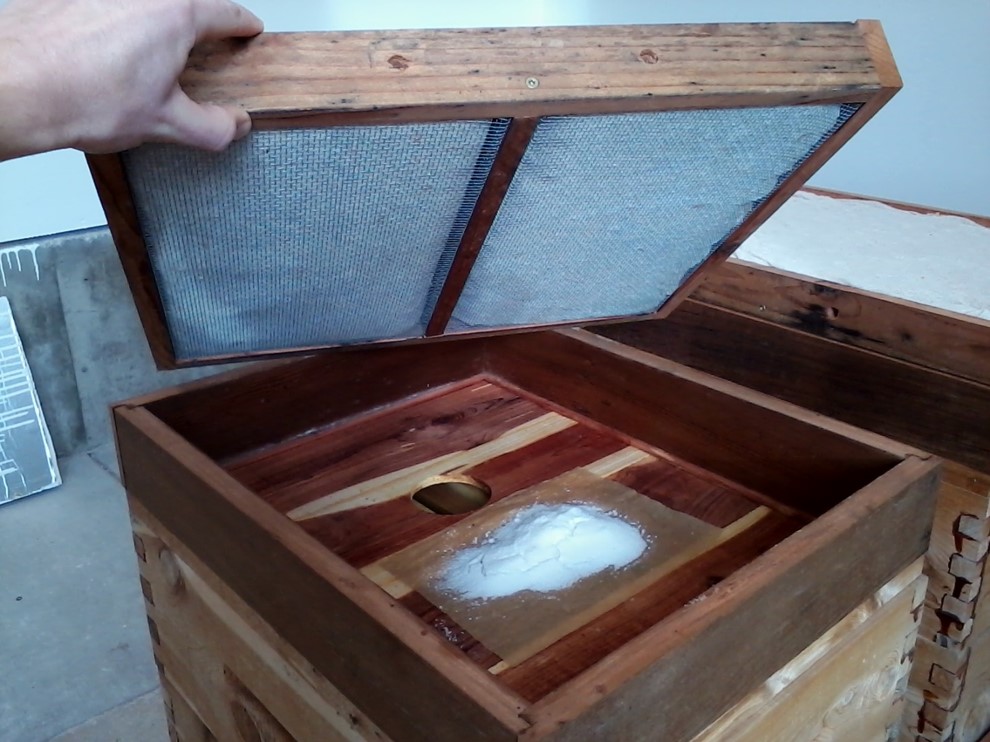Quilt boxes are used to reduce moisture inside the hive and provide insulation in the winter. Bret Jensen shared his instructions for building a quilt box in our January 2015 meeting:
The quilt box is 1/8″ hardware cloth stretched over the bottom of a very shallow (2-3″) dry well (also known as a rim, spacer, mountain camp feeder, and probably a few other names).
I made my quilt boxes from material that is a little thinner than the walls of my hive bodies to add extra clearance around the sides of my telescoping covers. I don’t think this is strictly necessary. I started with scraps of material and made my own box, but you could also start with a commercial super and cut sections off with a table saw. That sounds like something my middle school shop teacher would not approve – careful with those thumbs if you do this!
I added a transverse rib (made from 3/4″ square stock) across the bottom, both to stiffen the box and so the hardware cloth wouldn’t sag in the middle. The hardware cloth is cut 1″ larger than the inside dimensions of the drywell in each dimension, then 1/2″ is folded on each edge up to make a shallow pan. This pan is then tacked into place with staples. Since I added the rib, I am making two of these pans per quilt box.
I drilled 6 holes in the sides, two on each long side and one on the short side. The holes are angled up about 15 degrees off level to prevent water from draining into the quilt box. I think I used a 7/16″ drill bit but not sure that matters. On the inside of the box a 1″ square of screen door mesh is stapled over each hole to keep bugs from getting inside.
Finally, the pillow is just a cheesecloth bag filled with cedar shavings, sized to fill the inside of the quilt box. Initially I didn’t have the pillow and was dumping in the shavings loose, but that led to a lot of debris filtering down into the hive. Probably you could just lay down pieces of muslin and then pour the chips on top and it would work as well. The bag just makes it easier to handle. In the summer the pillow comes out and the quilt box becomes a ventilation box. This is where you need to use 1/8″ hardware cloth rather than 1/4″, else the bees will get into their “attic”.
People use all kinds of things in quilt boxes, it doesn’t have to be cedar or even wood chips.
Note that if you are not terribly handy, Shastina, our local beekeeping woodenware company, sells a combination feeder and quilt box they call a Wicking Top Feeder.

